Alexander Lamden: “Any piece of iron has a character”
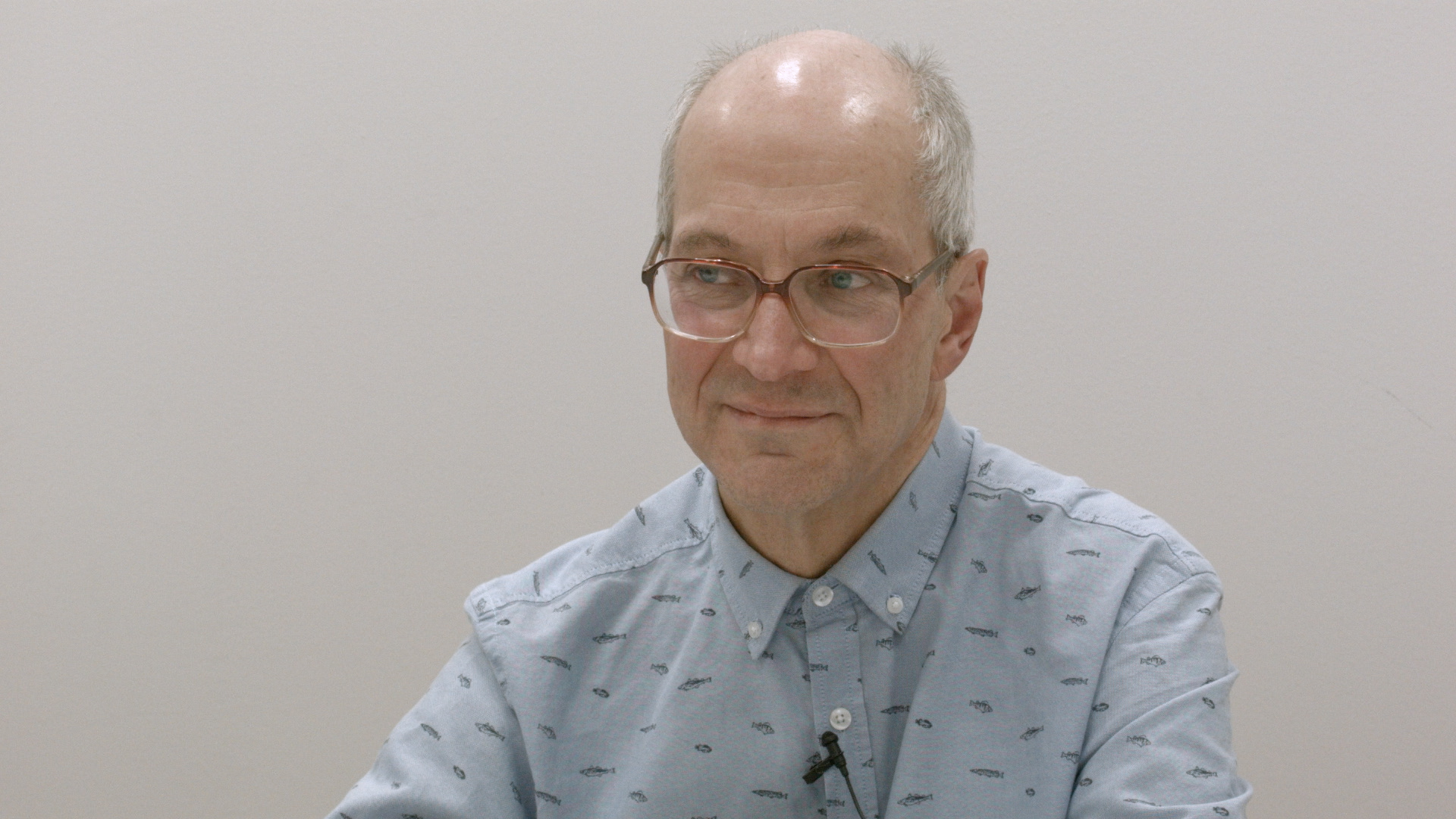
From 1968 to 1987, the BESM-6, the first Soviet supercomputer based on second-generation hardware components (semiconductor transistors), was mass-produced in the USSR. In total, there were 355 of such cars. Alexander Lamden served the car at number 32 from 1972 to 1991. First as a technician, later as a setup man and engineer.
We continue to complement the DataArt museum collection with interviews on IT history. We have already published the stories of Sergey Zonov , the creator of one of the main clones of the Spectrum, and Evgeny Kanevsky , who developed the EDVM and Iskra-226. Alexander Lamden told us about the working day of the computer center, the tasks that were set before the Soviet super-computers, and the fate of these machines.
')
“Found my own”
- I met a computer as a teenager. The 239th school at that time had its own computer, the Ural-1. On it, we had practical training. Together with the certificate of secondary education, we were given the identity of the operator-programmer.
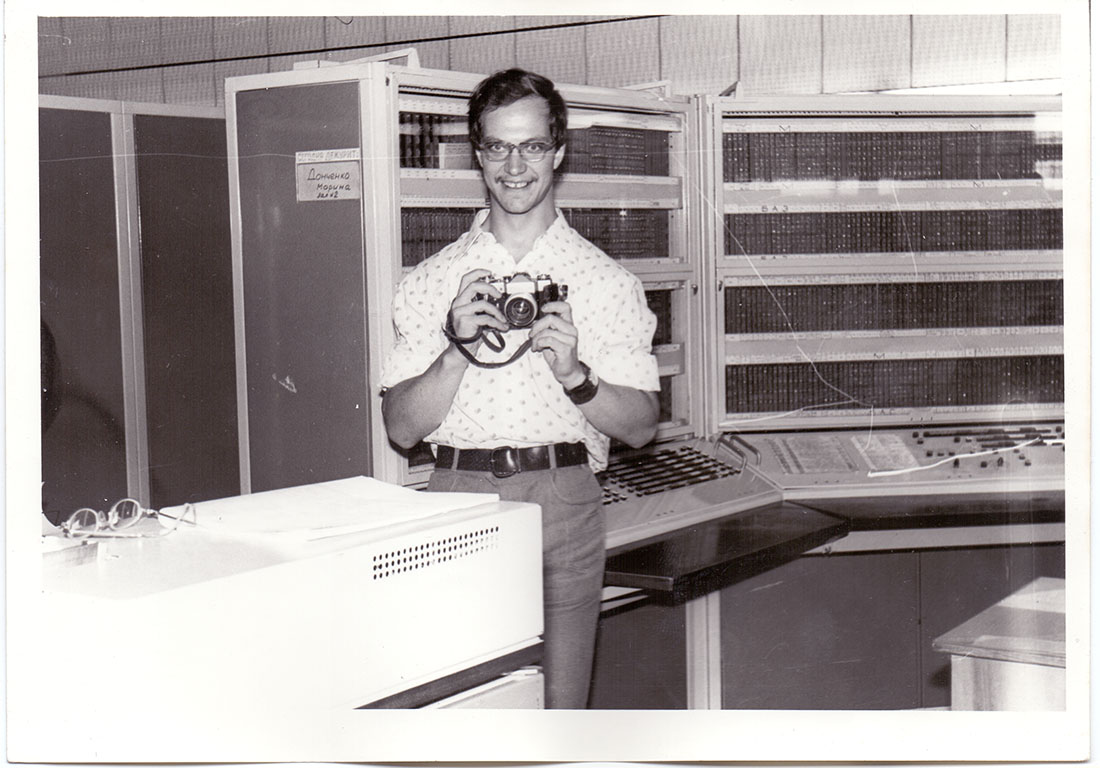
A. A. Lamden in the engine room, behind - BESM-6, visible racks BRUS and UU (right)
Then everything was much worse. Over the summer I passed the exams four times - once school and three times the entrance examinations: at first I didn’t enroll in physical education, then in mathematics. Then he entered LITMO, already in the evening. So it was necessary to work somewhere. The teacher, who was programming in our school, said: “Come to us”. “To us” is in “Giproenergomash”. Then they occupied two interesting buildings. One is on the Palace Embankment, directly opposite the Peter and Paul Fortress. The second is the Novodevichy Convent. I visited both there and there, sort of agreed on something. Suddenly, mother said that she needed a person at the computing center of the Leningrad branch of the Central Economics and Mathematics Institute.
So I got to the operation laboratory and, to be honest, I liked it here more than at Giproenergomash, although the work is about the same and for the same money. The old building did not scare me, because we ourselves lived in a communal apartment, on which I rode from end to end on a bicycle — not on a child’s room, no.
In general, I considered this work as a temporary phenomenon. I was going to be transferred to day time, to study in a human way. But I liked it so much in LO CEMI that I even changed the specialty of training - I didn’t do it at all on computer technology.
- What did you like?
- This is called "found his." I generally have a tendency to tinkering in all sorts of glands, in instruments, to work with a soldering iron. All this was there claimed. Secondly, the computer center turned out to be a very good team. Almost homely, very friendly - she played a role. I was the youngest employee at the institute, we went to the lab for excursions to look at me. But I calmly took the whole thing.
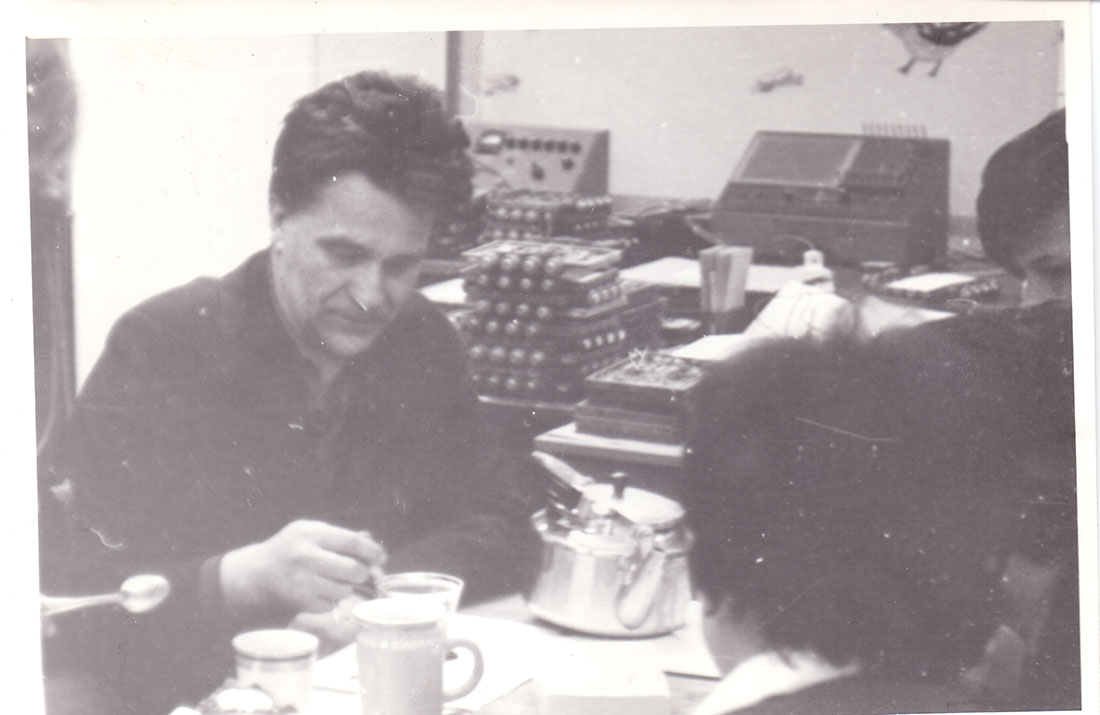
Zablab E. I. Baskov. Tea drinking with the staff of the technical service laboratory. Photo: Alexander Lamden
From breakdown one to breakdown two
- After Ural-1, I was not afraid of anything. We fought with him in practice. We did not repair the car ourselves, but we repaired it with us - we stood nearby. I saw how all this was done, and I understood approximately what was going on. But the BESM-6 is a technique of a different level.
- Tell us about your working day of the early 1970s.
- A typical day in our computer center, as in others, usually began with morning prophylaxis - input devices, output devices, storage devices. Let me explain what it was about. Input is a punched card. Punch cards are paper. Paper is dust. The ideal punch card is very well made, it has a calibrated thickness, a calendered surface, but there is still paper dust. Because it is prepared on the machines that pierce the holes, the edges of these holes sypyatsya. It must be cleaned - vacuuming, washing.
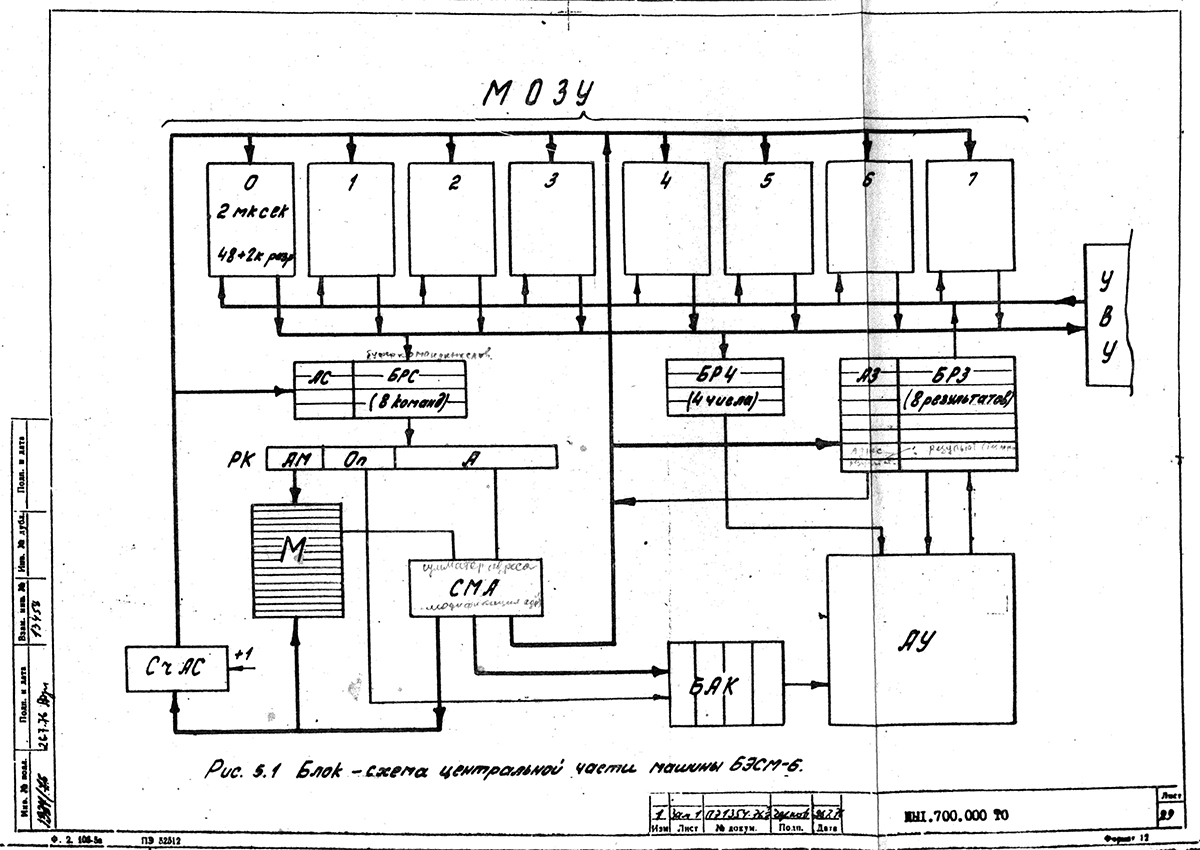
The block diagram of the central part of the machine from the technical description of BESM-6
- What to vacuum?
- Vulgar vacuuming. Wipe - with a cloth with alcohol. Similarly with output devices. The output device is an alphanumeric printing drum with a good size cupboard. There the paper is already easier, more dust. The ribbon is still machinery, which sometimes disperses and is late. It is necessary to check whether it beats smoothly, so that the line does not look like Amur waves.
The storage device is on magnetic tape. The tape recorders are not desktop, these are cabinets under two meters high, in which dust also accumulates, but it should not be. So, in the morning everything was washed, cleaned, wiped, checked. If there were any complaints from the operators - either a journal entry or the “does not work” sign means that they were also dealt with.
- How much time did morning prevention take?
- Usually it was done by three or four people, less often two. If everything is fast and there are no complaints, it took half an hour. If more, the device was turned off, they were not allowed to work and were engaged in it separately. After that, the car was turned on and started to figure out what was wrong. For everything to work - it did not happen.
- What did you talk with your colleagues at lunchtime?
- About how “kerosene flows through the wires”. He cannot flow here, through this delay, but he flows. Or vice versa. Must flow, not flow. But not only discussed this. We have a very diverse company. Some people, for example, could arrange an excursion to the Hermitage or give a tennis master class. Could go camping on a yacht - we were and yachtsmen.
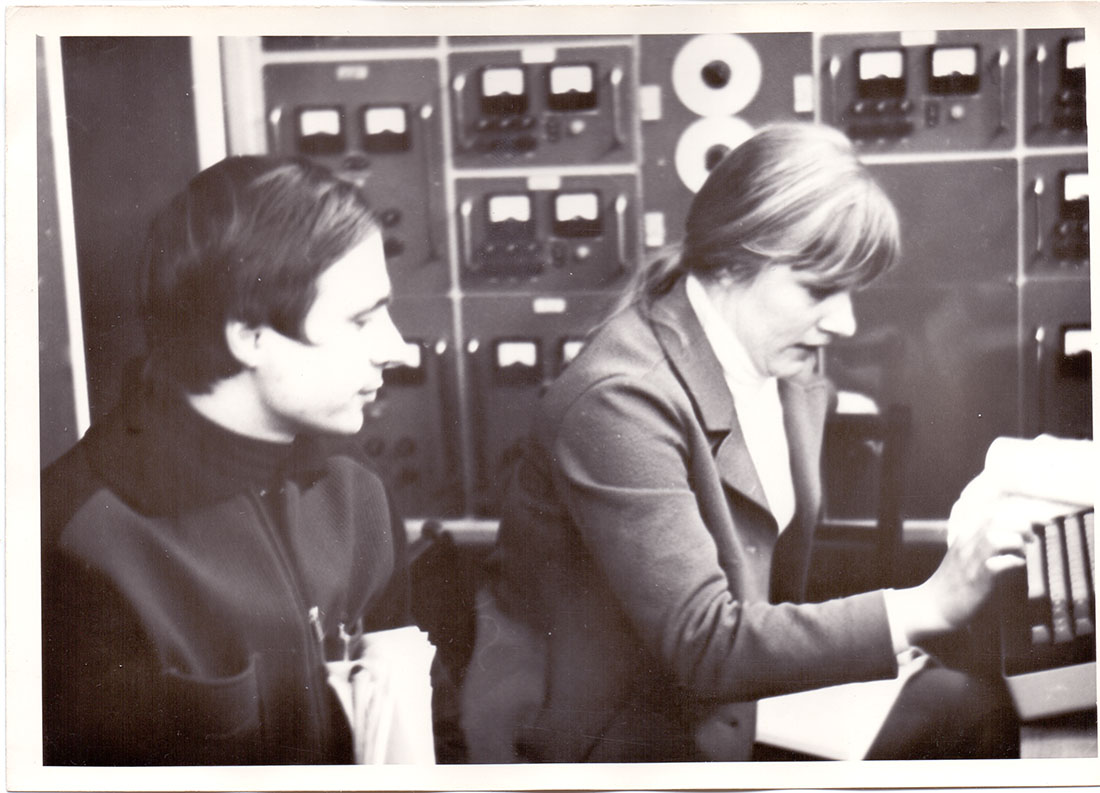
V.P. Alekhin and L.I. Guzii are editing the next version of the test program. In the background is one of the MOZU power racks. Photo: Alexander Lamden
- Cream of society!
- I would say, not even a cream, but a pair, which is above the cream. In general, I rarely met such people qualifications.
"Created equipment"
- Around this time, a little closer to the end of the 1970s, new equipment began to be introduced - a single family, a single series - the EU computer . Compared with BESM, the approach to working with it was fundamentally different. The technical public, who constantly grazed near the machine and, in fact, served it, could not do anything with it. It was possible to replace the unit independently, but we had to deal with all the heavy sores in a single all-Union service center. Therefore, any more or less serious repairs dragged on very strongly.
At the same time, the equipment was not very reliable, it was sensitive to external influences. Sustainable cars learned to do only at the end, when there was almost no sense in it. But BESM-6, we once did not turn off the whole month: we decided to set up an experiment, how much it could work without failures. In general, I have a fairly well-established negative opinion about the machines of the Unified Series, to which all forces and resources were then thrown. Accordingly, the direction of BESM was ruined and not enough attention was paid to what is now called personal machines.
Well, I must admit that the EU computer is a “created technique,” as we then said. Because it is a copy of the IBM 360, and in the future - IBM 370, which means a deliberate lag.
Humanitarian serpentarium
- How was your position called in the 1970s?
- Technician, senior technician. After the army became known as a setup man. My duties have expanded, but not because the position is different. It’s just that in 1975 Leningrad academic institutions shook up much, and then the Institute of Social and Economic Problems arose, into which we were poured.
I came from the army when everything was done. Before that, some institutions were closed down, turned into departments of this very ISEP. Someone from somewhere was driven out, someone, on the contrary, was pushed. Clan wrestling, as elsewhere. We looked like a black sheep (although we were a branch of the Institute of Economics and Mathematics, we had only an indirect relation to sociology and something similar) - the techies turned out to be in a humanitarian, as it were, serpentariums. It took quite a long time before they realized that we could also give them something.
- What were your tasks?
- Basically, statistical calculations. Preparing a sociologist survey. Based on this survey, he needs to get some predictions - pure math.
Perhaps the most interesting tasks were related to thermohydrodynamics, town planning, and transport engineering. In 1985, a 20-year transport network development plan was made. We counted it with us. One of our laboratories worked very closely with Lenproekt: passenger traffic, calculations. Metro schemes, which are now in different places show - from there. This is how it should look like in 2005. In order to draw these schemes, I refilled the plotter with ink.
The very plan for the development of the Leningrad metro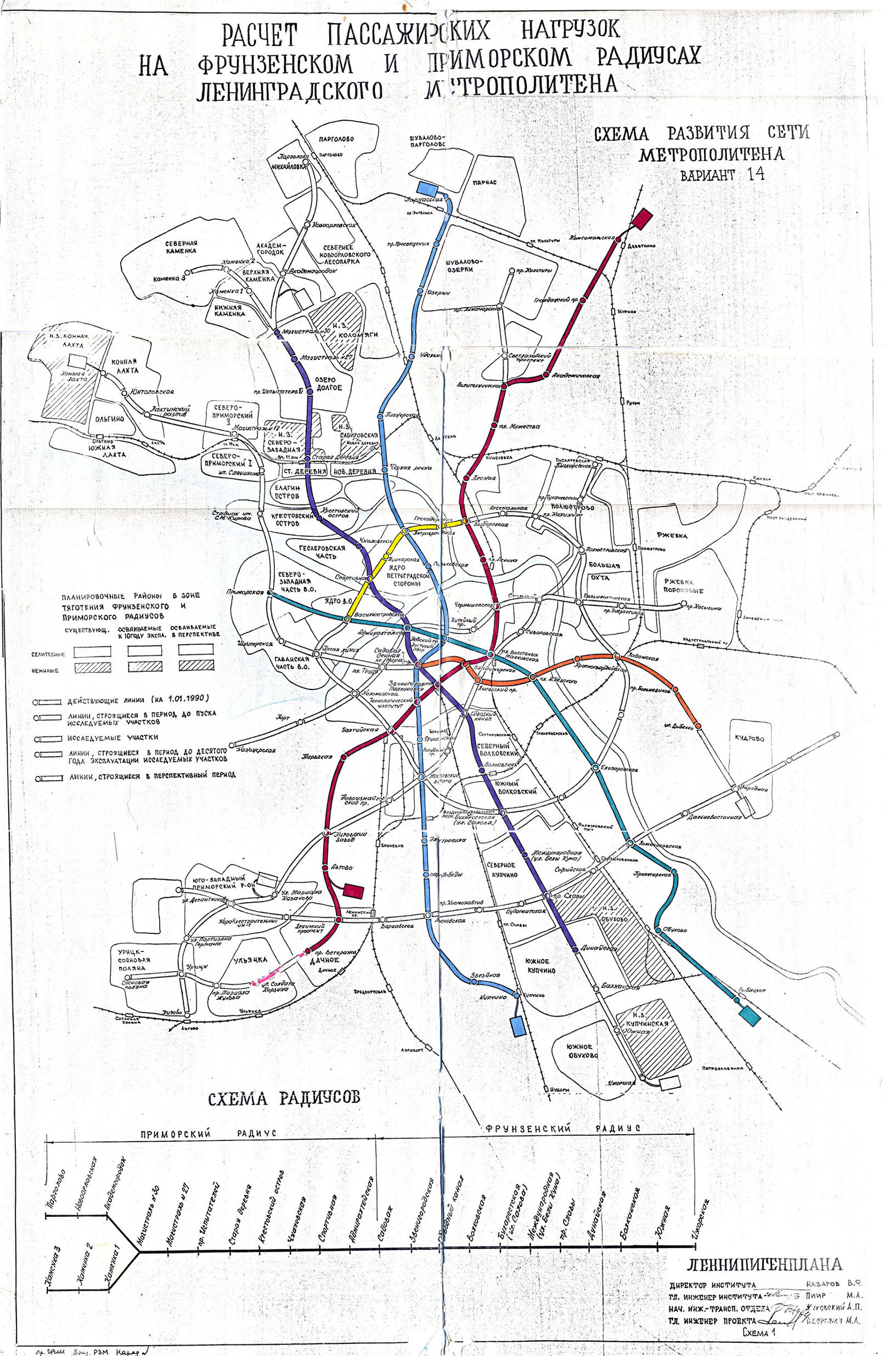

- be proud?
- I have no pride, unfortunately. Rather, heartburn. From the fact that it was all profukano.
- What are the calculations for thermohydrodynamics?
- For example, the calculation of thermohydrodynamics of Lake Ladoga. Where is the temperature, what pollution, can they get into the Neva, why and when. Whether ice will melt, whether there will be a fish. All the initial calculations for the dam in the Gulf of Finland were also done here. After that, simulated already on layouts. We had neither city planners, nor oceanologists, nor hydrologists, but there were mathematicians. Mathematics is a universal tool.
Friday and serious matters
- How did the breakdowns of the early 1970s differ from those of the late 1970s?
- Added new devices, and with them - new sores. We expanded the peripheral network. Some of the devices were connected in the factory way, and some were self-made self-made.
- Over the course of 20 years, have your tasks changed?
- They were about the same. But, having gained experience, I was already engaged not only in rubbing dust and washing, but also in some more interesting things. Such as, for example, the connection of freelance devices.
- What kind of devices?
- The current generation of this is probably not understand, because all the devices that you can imagine, now have a standard interface. I picked up, the driver downloaded - it works. BESM-6, as well as other equipment of that time, had a limited set of standard devices, and nothing more. The connection of an alien element is fraught with the fact that the number of lines, signal levels, operation algorithms do not fit. This all had to be tied up. In some devices had to be introduced quite deeply.
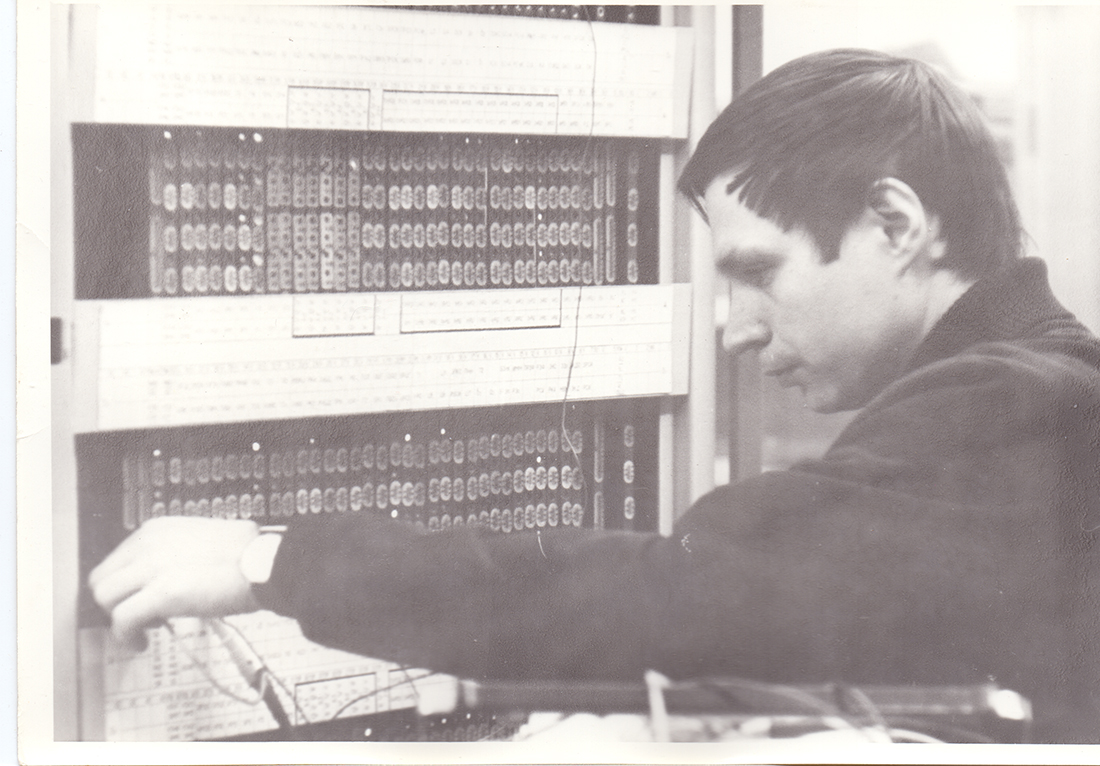
V.P. Alekhin connects the oscilloscope probe to one of the CMD rack units. Photo: Alexander Lamden
- Were you sitting on such puzzles until midnight?
“We didn’t usually sit until midnight.” The puzzles lived in the head and woke up in a dream - I am not joking. There were other interesting cases. After one of them, I stopped myself and forbade my employees to start serious work in the afternoon on Friday.
We just hitched another piece of iron and did it together with the Kiev Institute of Cybernetics. The main part of the thinking process was on us, we coordinated and refined the scheme with them, they made a mockup, and later - a working instance of an intermediate device. Then they brought us to debug.
Once again a wonderful guy came from Kiev, brought this thing, we examined it. Three days were taken, all is well. It remains to make the last couple of measurements - and he has a plane home. Friday. Went off for lunch, came, we begin to measure. Then a crocodile clip flies, flies over the board and touches something. It turned out that this earth clamp was not grounded and on it was the voltage that goes into the circuit.
The car stops, we begin to understand and it turns out that in four or five racks along this chain everything is destroyed. The algorithm of further actions is clear: take out one block - insert another, take out - insert. But serviceable blocks for replacement ran out. This kid said goodbye to us - he has a plane - and here I am, the head of the car, and I got six hands in three hands to repair the blocks until the end of Sunday. You can't start serious business on Friday!
In general, the technique should be treated not only with respect, but with the understanding that it has its own life. They say that artificial intelligence is still far away, but any piece of iron, even a pen, has character. Especially difficult technique. Primitive example: you need to leave work early, literally 10 minutes. You put on your shoes — the door opens: “And our car got up!” You take off your shoes, you go to repair.
Another case. Everything is good, the machine works, but you decide to fix something minor. At this time, something stops working elsewhere. When there were several such cases - “leave early” and “went to the car, it broke down” - he said: “Put Lamden here a folding bed, but do not let him go to the car!”
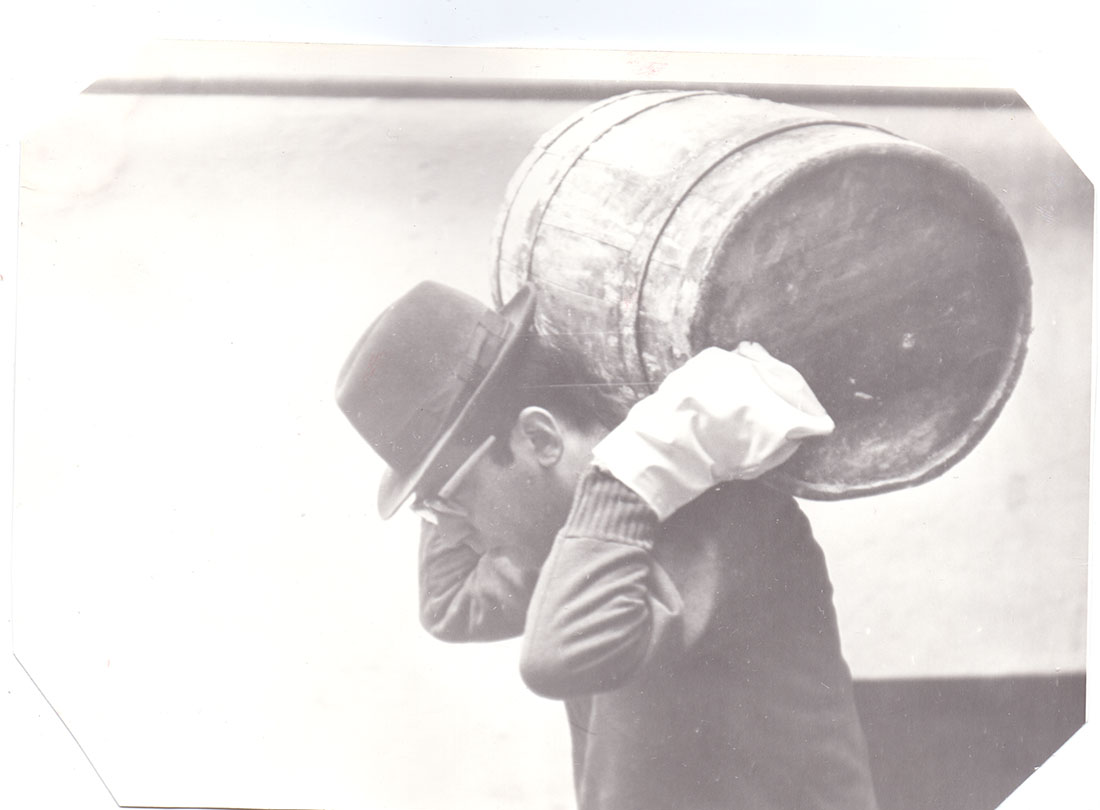
S.V. Sivashinsky, Junior Researcher, ISEP, during a general mission to the collective farm. Photo: Alexander Lamden
Recent years BESM-6
- Almost to the very end, we developed our piece of iron, led to a more modern look. But the restructuring, turning into a shootout, very much all crippled. Funding for work in computing was almost stopped.
Somewhere in the year 1987, we drove to Moscow to look at a car that could replace the BESM-6. She already worked, were tested. But no money was given. Everything. Now that factory huddles on two floors of one building, the rest of the premises is a business center.
- What kind of car did you go to watch?
- It was on the modern element base, the principles of construction and architecture changed a little. The series was called "Elbrus" . And the guys really planned a series - from super-computers to desktop machines that were software compatible. That is, it was possible to debug programs on my desk, and to send serious calculations to a super-computer, and the program did not need to change anything.
- In 1987, you worked on it to run?
- Yes. But at that time it was clear that everything was bad. The last at that time EU-ovsky cars were pulled up, all the funding went there. After I ran into personal computers, it became clear that BESM-6 is living out its last years. Because the computing power has already become more or less comparable. Despite the fact that the BESM-6 is a huge engine room, an impressive auxiliary room with fine filters, with an oil filter, with irrigation. If you describe all this to anyone who understands air conditioning systems, he will be very impressed. Together with the numerous personnel who had to constantly jump around the car, it was already becoming completely unaffordable.
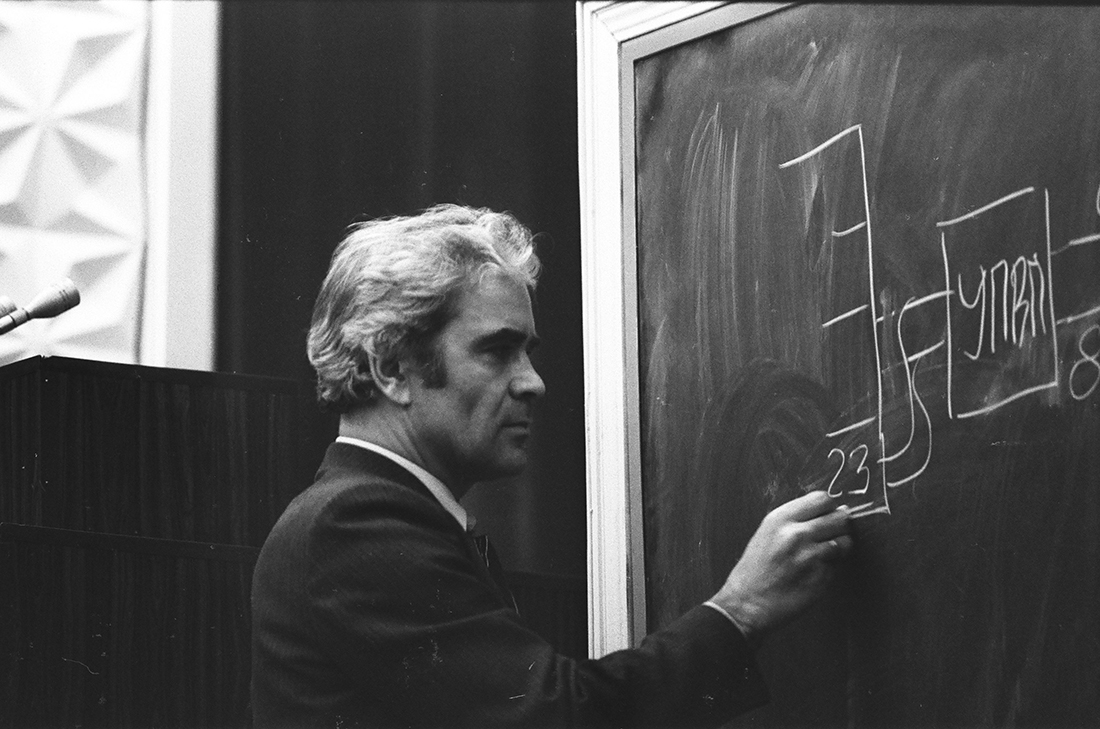
April 1986 A conference on BESM-6 at the Leningrad Institute of Nuclear Physics (Gatchina). Photo: Alexander Lamden
- People began to be fired?
- I left earlier. The public that remained to refine was already of pre-retirement or retirement age. At the same time there was a conversion to some tasks related to personal equipment. When the institute is full of people, they need to be connected to the network, a server should be set up, a connection should be established, common printers should be made. I was invited to another place. (In 1991, Alexander Lamden worked in the specialty on the St. Petersburg Commodity Stock Exchange, then for 20 years at the processing center of the Bank Petrovsky - Approx. Ed.)
- It is difficult to leave work, which has devoted 20 years?
- On the one hand, it is very difficult, on the other - easy. I understood that all this is living out the last years, and it is not clear what next. The time was already hard. I didn’t have any problems with salaries, they even raised me, but I understood that this was not for long.
- What is now at your computer center?
“When the staff was transferred to the desktops, they did something like a lecture hall in the engine room.” Then they survived from there. This is such an attractive place - the corner of Tchaikovsky and Fontanka - the very center of St. Petersburg, the former famous school of jurisprudence.
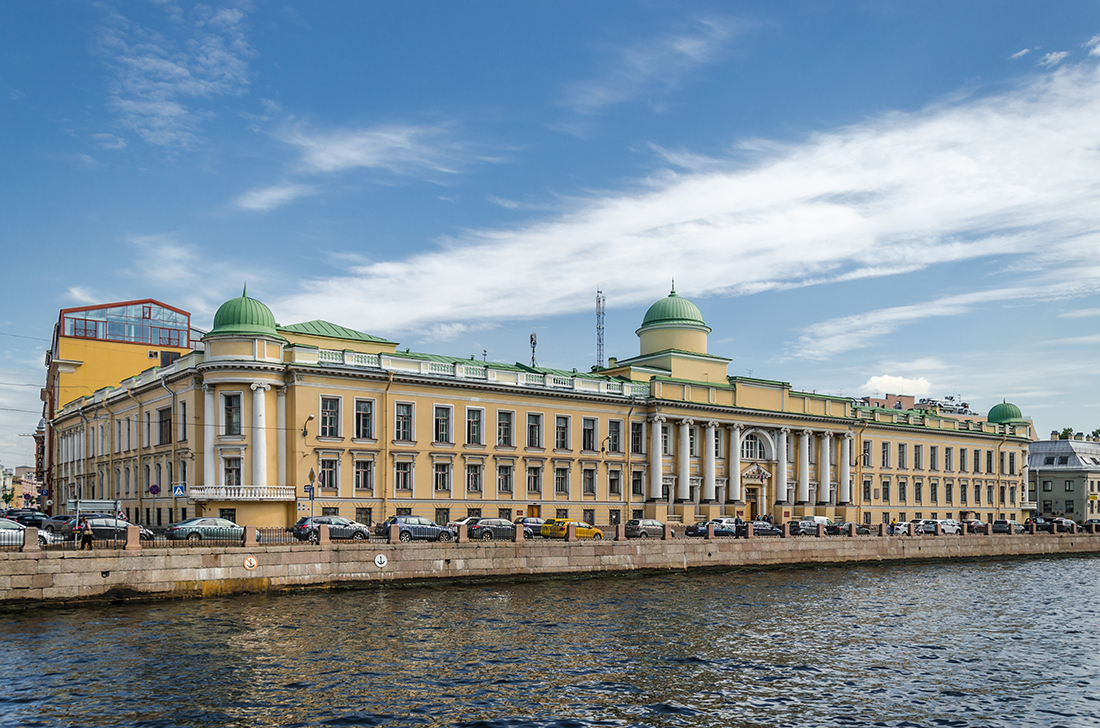
The building of the former Imperial School of Law is now occupied by the Leningrad Regional Court
- What did you like most about your profession?
- To make the machine work. When a cold corpse begins to live, it is pleasant. This is not only for computer technology - for any piece of hardware. Go through the bike, for example. Sometimes I found defects in cars that the workshop could not find.
- Is it true that gold from BESM was taken out and sold?
- They did not reach him themselves - they handed over blocks to the appropriate place. Nearly 2 kilograms of gold was smeared over the BESM-6. But smeared with such a thin layer that it is impossible to tear it off, a special process is needed. There were firms that did it. And now you can meet the announcement: "We accept connectors, chips." Silver, gold, palladium. When you have one phone or computer - this is about nothing, there is a fraction of a gram. When gold is 2 kilograms, it is already an industrial scale. They handed over the blocks, received money, bought personal computers, and continued to work.
Even when everything worked well for us, BESM-6 had already been thrown away at LIIEF in Gatchina (Institute of Nuclear Physics). I was asked to go see if there was anything there that we might find useful for exploitation. And I can say, I turned out to have good friends at the funeral. When they began to disassemble our car, I was invited, but I did not go. In order not to break up what has been blowing dust for 20 years.
Source: https://habr.com/ru/post/451934/
All Articles